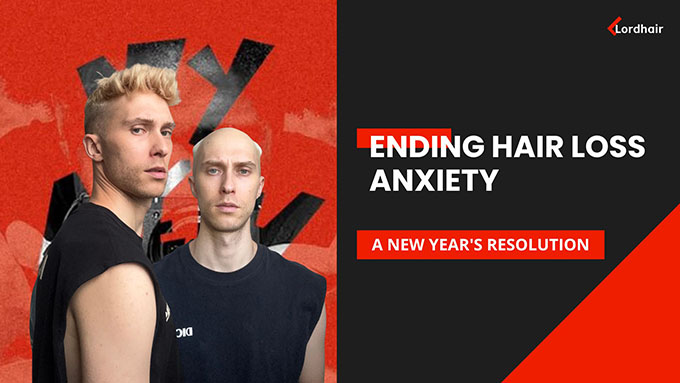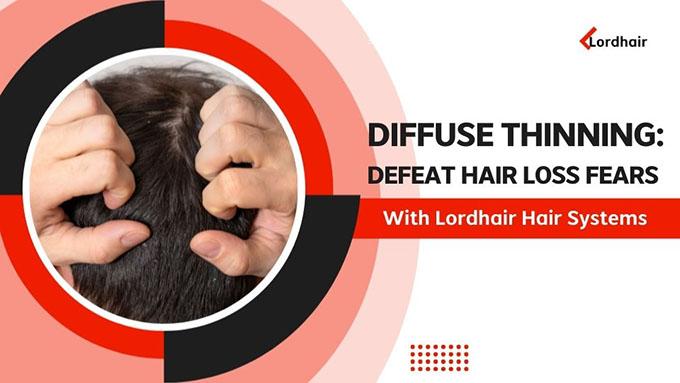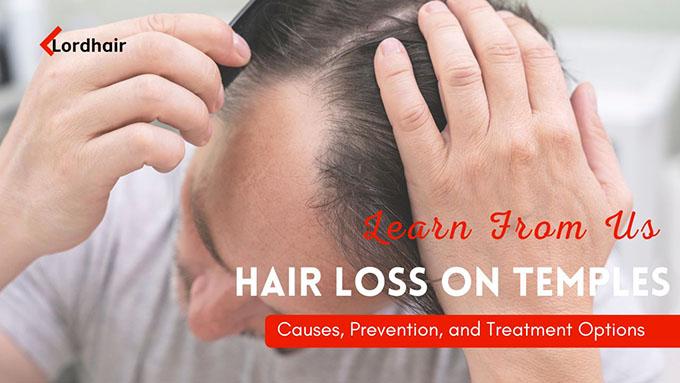What’s Hair Shedding Scale and How to Use the Visual Tool?
- Written by Vivek Khullar
- | Published May 1, 2024
- |
- 7 min read
 Listen to the full text
Listen to the full textHair shedding is a normal part of life, affecting both men and women. For those who don’t know, it’s a consequence of our hair’s natural cycle which can be influenced by both internal and external factors. But how to know if your hair loss is normal shedding or something more? That’s where the hair shedding scale comes in. For many people, it’s hard to wrap their heads around the varying levels of hair fall. Result? Missed opportunities for prevention at an early stage. But worry not. Lordhair - trusted globally for toupees ad wigs - is here to help!
In this blog, we will break down everything about hair shedding scale and popular visual charts. We will also explore major causes of hair loss and unveil popular treatment options. By understanding the different levels of hair fall, you’ll be better equipped to take control of your hair health.
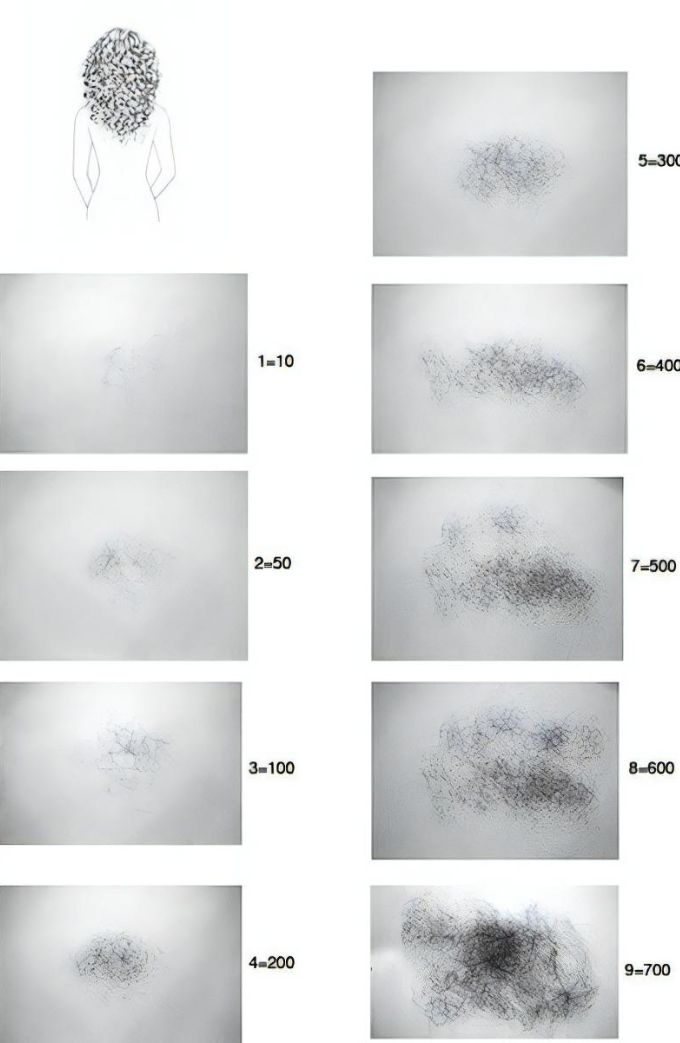
Hair Shedding Scale: Introduction
While we all can relate to the occasional hair shedding, it can be difficult to know if what you’re experiencing is normal or a sign of something more. Let’s be honest: it's hard to count hair and examine the damage. That’s where visual hair shedding scale comes in handy!
Explaining the hair loss scale in words is a little tricky but let’s start with the study (published by PubMed) that delivered the scale itself. It was aimed at developing a reliable method, especially for women with different hair lengths to assess their own hair fall. Researchers created a visual scale featuring photographs of 6 bundles of hair. Each contained a different amount of strands (ranging from very little to a lot).
According to researchers, the number of hairs in each pile was carefully counted and piles were then photographed and arranged as per size. And here’s where the interesting part begins! They then involved 2 groups of participants.
Group 1 consisted of women with known female pattern hair loss (FPHL). They were first asked to look at the hair photographs and select the bundle that best represented their shedding, both on the day they wash their hair and on normal days. They were then reassessed 1-2 weeks later to see if their scores remained consistent.
Group 2, on the other hand, comprised women with recently diagnosed, untreated FPHL. It used the same visual scale to assess their hair shedding. Their results were compared to a group of schoolgirls (an age group where hair loss is uncommon).
We bet you are thinking, “What did the study find?”. Well, here are some key findings discovered by the study:
Consistency among participants: In the first group (women with FPHL), a significant portion (46 out 50) gave the same score on both assessments. Remaining participants, however, saw a minor difference (one grade) in their shedding score. What’s more interesting is that all women with score variations had short hair. Meaning, scale might be more effective for women with longer hair.
Differentiating normal from excessive shedding: Talking about the second group, well, it predominantly scored its shedding as four or above on the scale (182 out of 209). In contrast, only one schoolgirl out of 100 gave a score higher than four. This highlights the scale’s potential to distinguish between normal and excessive hair shedding.
Early detection and treatment: Study conducted by PubMed also revealed that some women with female pattern hair loss who didn’t perceive excessive shedding actually showed increased hair loss when assessed with the scale. This suggests that ladies might become accustomed to higher-than-normal hair fall and may not recognize it as a potential problem.
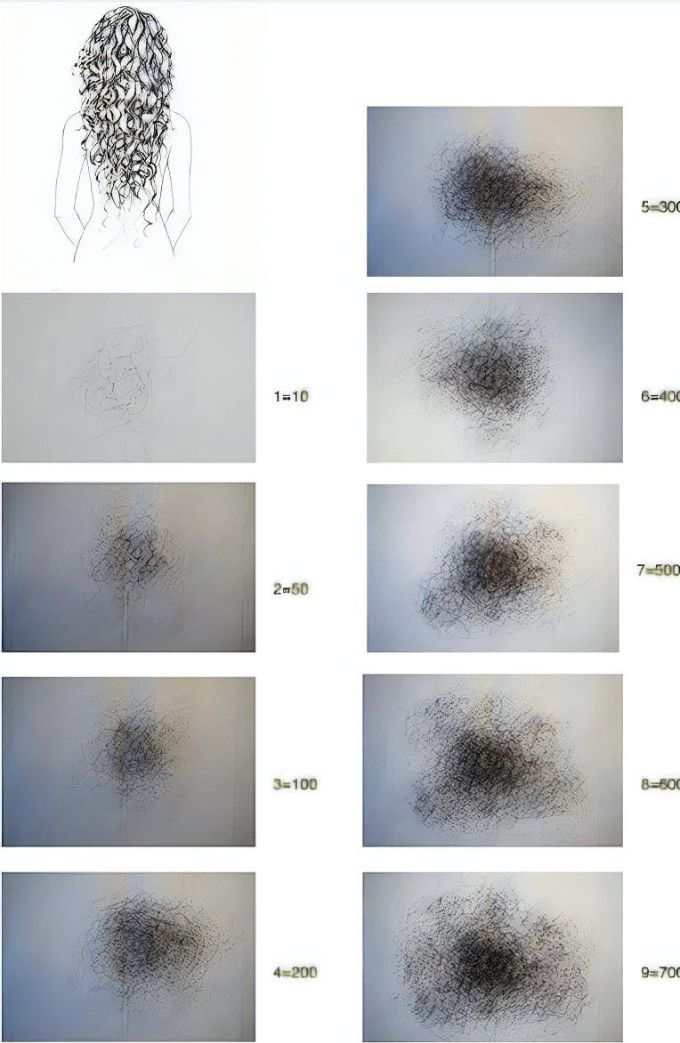
Important Takeaways from Hair Shedding Scale Study
The research conducted by PubMed demonstrates that visual hair shedding can be a valuable tool for women with long hair to assess hair shedding. It can help them potentially differentiate between normal and abnormal levels. Here’s a breakdown of the score interpretation based on the study:
Grade 1-2: Very low shedding (few strands. 10 to 50.)
Grade 3: Moderate shedding (100 strands indicates normal daily shedding.)
Grade 4 or above: High shedding (losing 200 strands or above every day is a sign of excessive hair loss.)
It’s important to consult a dermatologist if you consistently fall into the last range of the visual hair-shedding scale.
Make sure to check out these sources as well:
Here’s the answer to why am I balding
Hair loss prevention guide
Does the keto diet cause hair loss and damage?
Basic hair care system for 2024
How to hydrate hair for optimum scalp and hair health
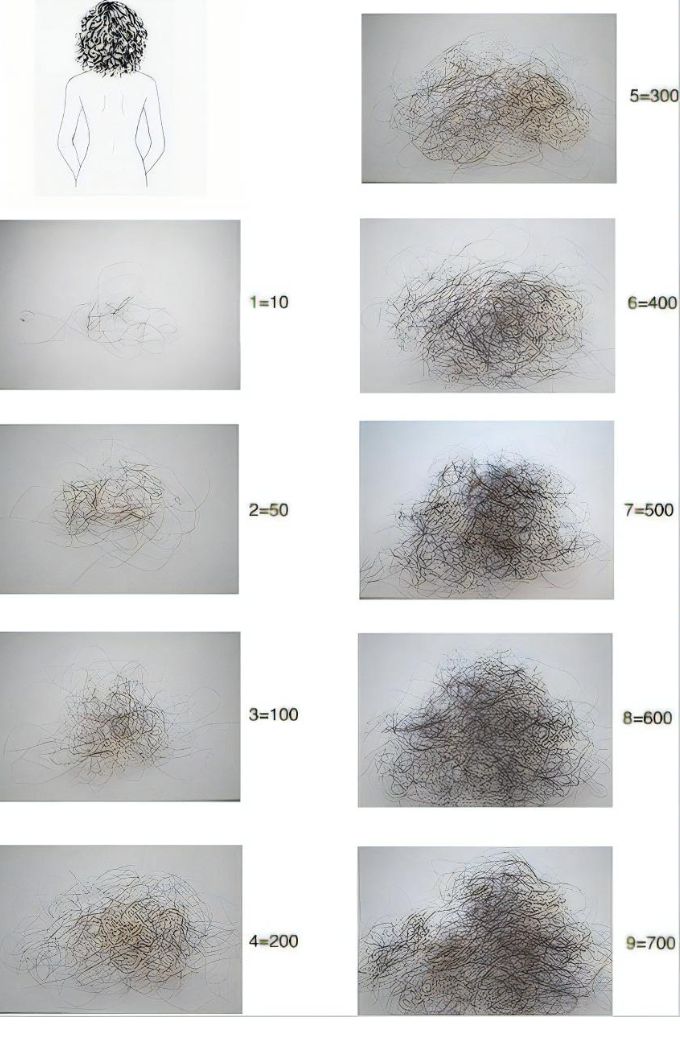
Can Men also Use Visual Hair Shedding Scale?
The visual hair-shedding scale we discussed was developed specifically for women. In men, it may not deliver precise insights. And if you’re still wondering why might it not be best fit for men, well, here are the reasons:
Hair density: Males typically have denser hair than women. This means the amount of hair considered normal shedding for a woman might appear excessive on a man’s scalp.
Hair loss patterns: Pattern hair loss is different in both men and women. MPHL often follows an M-shape pattern, receding at the temples or thinning at the crown. The visual scale doesn’t account for these localized areas.
Lordhair is committed to providing authentic and inclusive information to its readers. Worry not, guys. We’re actively following research on hair loss in men and will update the blog as soon as a validated visual scale becomes available for you!
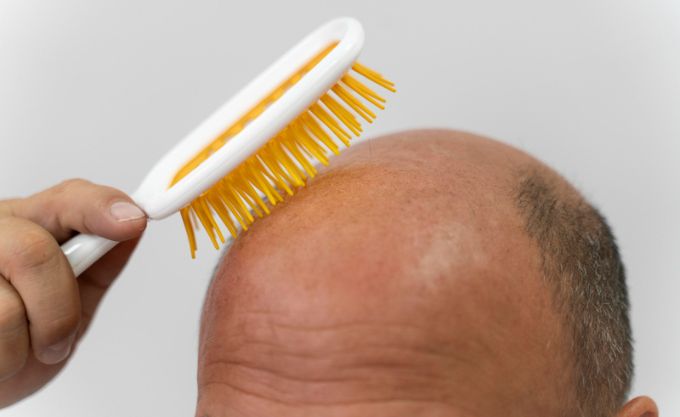
What Causes Hair Shedding in Men and Women?
Now that you have got a better understanding of how to assess your hair shedding level using the visual scale, you might be thinking about what triggers this problem in the first place. Although hair shedding is a natural process (as we said earlier), it can become excessive and lead to concerns about hair health in men and women. Here are common causes behind hair fall:
Androgenetic alopecia: This is the most common cause of shedding. It’s influenced by genes and hormones, particularly by androgens (male sex hormones) like testosterone. In men, it typically manifests as a receding hairline or a thinning crown. In women, however, it often presents as a general thinning throughout the scalp, with a widening part line.
Pregnancy and childbirth: Yes, you read it right! Although temporary, pregnancy and childbirth affect many women. Why, you ask? That’s because hormonal shifts during or after giving birth can cause hair follicles to enter a resting phase. It leads to increased shedding 2-4 months after delivery. This problem usually resolves on its own within a year.
Menopause: Similar to postpartum hair loss (above reason), menopause can cause fluctuations in estrogen and progesterone levels. Potentially triggering shedding in some women.
Thyroid issues: Another common reason behind hair shedding in men and women. An underactive or overactive thyroid gland can disrupt the hair growth cycle, leading to hair fall.
Physical or emotional stress: Experiencing significant stress can temporarily push hair follicles into the resting phase, resulting in increased shedding weeks or months later.
Autoimmune diseases: Certain autoimmune diseases such as alopecia areata can attack follicles, causing hair to shed in patches around the scalp.
Scalp infections: Fungal or bacterial infections on the scalp can also result in damage to hair follicles and lead to strands’ breakage.
Medical treatments: Did you recently undergo chemotherapy or radiation therapy? Or are you applying topical or consuming medications to fix a specific disease? If so, there’s a possibility that these medical treatments could cause hair shedding on your scalp!
Iron and other nutrient deficiencies: You see, iron is essential for healthy hair growth. Its deficiency can lead to hair thinning and increased shedding. And that’s not it! Even a lack of vitamin D, protein, biotin, and other essential nutrients can contribute to hair loss.
Hairstyles and treatments: Like wearing tight hairstyles like braids or ponytails? Good but do you know that these can put excessive tension on the scalp, first causing hair fall and then potentially leading to traction alopecia? Even chemical hair treatments like bleaching, perming, and relaxing can damage strands and contribute to breakage.
Diet and overall health: Factors like poor diet, smoking, drinking, and inadequate sleep can impact your hair health and contribute to increased shedding.
What are Best Treatments for Hair Shedding?
Various treatments can help men and women manage shedding and promote hair regrowth. Here are some best options:
Topical treatments: As the name itself suggests, these are medications that are applied directly to the scalp. However, different treatments work in different ways. For instance, some work by increasing blood circulation to the scalp, potentially stimulating hair follicle activity and promoting growth. Some work by targeting dihydrotestosterone (DHT). By inhibiting this conversion, these treatments aim to create a more favorable environment for hair growth.
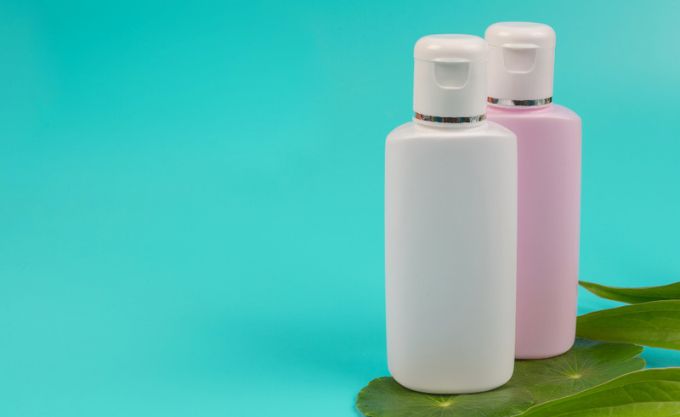
Laser therapy: By laser therapy, don’t get the idea that we’re suggesting use of high-beam lasers that are red in color and dangerous in nature; we are talking about low-level laser therapy. For those who don’t know, it involves using a handheld device to deliver low-energy laser light to the scalp. Dermatologists believe that this light exposure can stimulate follicles and promote hair growth. However, it is known to have its share of side effects.
Platelet-rich plasma (PRP) therapy: This treatment involves drawing a small amount of the patient’s blood which is then processed into concrete platelets. Experts then inject the platelet-rich plasma back into the scalp. Platelets contain growth factors that may stimulate hair follicle activity and promote new hair growth which can become evident once you check the visual hair shedding scale again.
Dietary and nutritional support: Well, if you’re still consuming junk food, STOP right now! Ensuring adequate intake of essential nutrients like iron, protein, biotin, vitamin D, and omega-3 fatty acids is crucial for overall hair health. Addressing any deficiencies through dietary changes or supplements can support healthy hair growth and potentially reduce shedding.
Stress management: Remember, we told you how chronic stress can negatively impact hair growth? Well, techniques like meditation, yoga, or deep breathing exercises can help you manage stress levels. Potentially, promoting a healthy scalp environment for hair growth.
Scalp care practices: Another important lifestyle practice to consider to stop hair shedding in 2024! Maintaining a healthy scalp is vital for optimal hair growth. Gently cleanse your scalp twice a week to remove dirt and buildup. Avoid harsh chemicals and excessive heat styling. Also, adopt scalp massage to improve the flow of oxygen-carrying blood to your hair follicles.
Hair transplants: In case your hair loss is severe and there’s no hope of achieving a head full of healthy hair even after using the aforementioned tips, you may consider undergoing hair transplants. These involve transplanting hair follicles from a donor area to a balding or thinning area.
Although it can be a permanent solution, it requires a consultation with a qualified dermatologist or hair transplant surgeon to determine candidacy and discuss the specifics of the procedure. Also, know that not every hair transplant surgery goes successfully. Some may face side effects like bruising, swelling, pain, throbbing, discomfort, numbness, and formation of small scabs around treated areas.
Hair systems: Now unlike hair transplants, hair systems for men and women’s wigs have no side effects. Since they are non-surgical hair replacements, they are also pain-free! Hair systems from Lordhair are made of fine base materials with real human hair attached. They can be attached to the scalp using tape, glue, or clips for a natural-looking result.
Long-lasting and durable, our hair units (also known as toupees, men’s hairpieces, and patches) come in a variety of hair lengths, hair types, base types and sizes, and colors. We also offer a wide range of customization options for a realistic and comfortable fit!
Check out how amazing this man looks after wearing high-quality hair replacement from Lordhair:
Hair Shedding Visual Scale: Final Words
Keep in mind that there’s no single BEST treatment for hair shedding. A combined approach tailored to the underlying cause will yield the most successful results. Consulting with a dermatologist will help you determine the best approach for your hair fall concerns. Also, it’s not necessary that these treatments will work for all men and women. To them, we highly recommend buying hair systems or wigs for immediate aesthetic improvement.
With that said, our guide on visual hair shedding scale ends here. Got any queries to ask? Contact us today and have them answered by our hair experts!

